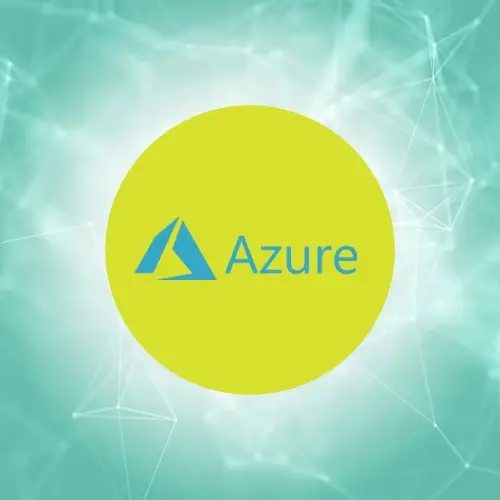Stelo + Microsoft Azure

Stelo Data Replicator works seamlessly with Microsoft Azure, making it a great choice for organizations aiming to modernize their data infrastructure and take full advantage of Azure’s powerful cloud capabilities.
As more businesses move toward hybrid environments and cloud-first strategies, Stelo makes it easy to replicate operational data in real time—from on-prem and legacy systems like IBM Db2—directly into the Azure ecosystem, including platforms like Databricks. This seamless integration supports Azure’s hybrid model by enabling smooth, low-impact data movement without disrupting day-to-day operations.
Stelo’s scalable architecture is a natural fit with Azure’s flexible compute and storage options. Whether you're handling millions of transactions per hour or managing multi-terabyte datasets, Stelo helps you move data efficiently and without performance hiccups. Plus, its cost-effective licensing complements Azure’s pay-as-you-go model, keeping resource usage and budgets in check.
Stelo directly connects into Databricks without any additional data hops—unlocking advanced analytics, AI, and machine learning opportunities within the Azure ecosystem without data delay.
Stelo offers strong support for data security, automatic recovery, and minimal administrative overhead—all aligning with Azure’s built-in security and compliance features. And with Azure’s global infrastructure and Stelo’s WAN-optimized performance, you can replicate and process data closer to users, improving responsiveness and meeting regional compliance needs.
Connects From
 Customizable
Customizable
Anywhere-to-Anywhere
Avoid vendor lock-in. Stelo uses heterogeneous replication for bi-directional support across all source and destination types. Our open-standards approach allows us to remain vendor-agnostic while providing highly flexible deployment models.
 Quick Setup
Quick Setup
Rapid Deployment
Streamline your deployment plan without costly delays. Stelo typically deploys in less than a day and cuts production time down from months to only weeks.
 Easy-to-Use
Easy-to-Use
Set It and Forget It
Simple installation with GUI interface, configuration wizard, and advanced tools makes product setup and operation straightforward, with no programming needed. Once running, Stelo reliably operates in the background without requiring dedicated engineering support to maintain and manage. Alter, add, and drop schema changes are replicated automatically.
 Low Impact
Low Impact
Near-Zero Footprint
Our process provides ultra-low CPU load (less than 1% typical) to minimize production impact and avoid operational disruption. No source or destination software installation required. Only transfer data you need thanks to Dataset Partitioning.
 Cost-Efficient
Cost-Efficient
Unlimited Connections
A single instance can support multiple sources and destinations without additional licensing. The Stelo license model is independent of the number of cores to either the source or destination, so you only pay for the capacity required to support the transaction volume. Your data ecosystem can change over time without additional costs.
 Low Latency
Low Latency
Multi-Threaded Processing
Stelo leverages native data loading functions, and exploits multithreaded processing to provide fast, reliable performance for replicating multiple tables concurrently.
Data Warehousing: It's Time to Evolve Your Data Management Strategy
The “new frontier” of data ingestion goes beyond traditional data warehousing by enabling more choice. New open-source systems allow companies to efficiently leverage a range of heterogeneous tools while maintaining high performance. Companies like Microsoft set up cloud services like Azure to allow anyone producing Kafka data to connect and move data from relational sources to cloud and non-relational platforms such as Salesforce, Google Cloud, and Synapse. Many companies are taking advantage of these new technologies to efficiently stream data into cloud-based delta lakes while maintaining their existing data warehouse applications.
Others are completely offloading their in-house data center. Most data originates in online transactional processing (OLTP) systems supported by technology companies expert in managing high-volume transactions, but legacy systems weren’t designed to help users leverage emerging high-data application trends. Reporting on legacy databases can either reduce performance or require expensive hardware upgrades to offset the performance reductions. To address this challenge, many organizations offload their reporting to a data store, such as Microsoft SQL Server, that scales more cost-effectively. Read our full post to discover how real-time data integration affects data warehousing strategies.
FAQ
We offer the Stelo Data Replicator plan with three VM sizes: E2s Standard v3 (2 cores), E4s Standard v3 (4 cores), and E8s Standard v3 (8 cores).
Yes, Stelo purchases qualify for Microsoft Azure Consumption Commitment (MACC), allowing you to utilize your existing Azure investment.
You'll need an Azure subscription with administrative privileges, network connectivity with outbound internet access, and a storage account.
Yes, Stelo provides seamless integration with Databricks, streaming data directly to Databricks without moving through Azure Data Factory.
Support Features
Accessible Support
Quick support is available for training, troubleshooting, version updates, and data replication architecture. 24/7 Urgent Incident Support is included in annual subscriptions.
Highly Experienced Team
Stelo’s technologists have more than 30 years' experience developing reliable data software. Whether you need basic support or have a tricky technical challenge, we can work with you to solve any problem.
End-to-End Proficiency
Our team has detailed knowledge of every data platform we support and can troubleshoot end-to-end replication pairing in heterogeneous environments to ensure the pairings are working properly.
Constant Evolution
Unlike some other solutions, Stelo won't go out of date. New source and target types are continuously added through active updates to stay compatible with emerging market requirements.
The Latest from Our Blog

Move Data to BigQuery Faster with Stelo, Now on Google Cloud Marketplace

Now Available on Azure Marketplace: Deploy Stelo in Minutes

Introducing Stelo v6.51: Simplifying Data Pipelines with a Modern Web-Based Interface

Stelo Achieves BigQuery Designation, Unlocking Legacy Data for Enterprise Cloud Analytics
Get Started
These three steps will help you ensure Stelo works for your needs, then seamlessly deploy your solution.
Schedule a Demo
Our expert consultants will guide you through the functionality of Stelo, using your intended data stores.
Try Stelo
Test the full capability of the software in your own environment for 15 days. No obligations.
Go Live
When you're ready, we can deploy your Stelo instance in under 24 hours with no disruptions to your operations.




